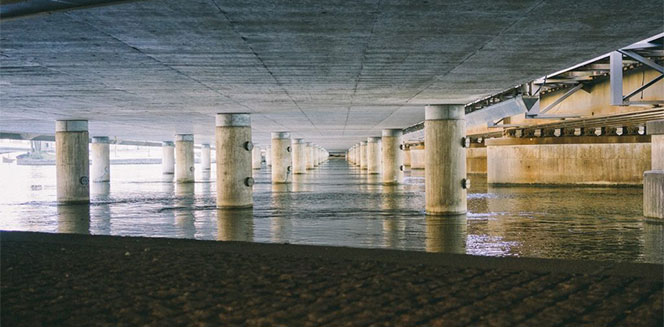Waterstop Features And Materials For Waterproofing Construction Sites

9 Dec
2021
The demand for waterstop has increased over the last few years. As it offers several advantages such as high flexibility, elasticity, tensile strength, and excellent durability, they are widely used in construction structures such as dams, tunnels, and water treatment facilities.
According to Allied Market Research, the U.S. waterstop market is expected to reach $983.5 million by 2027, growing at a CAGR of 4.9% from 2020 to 2027. Increase in demand for clean water for industrial applications and a boom in construction & building of Waterhouse drive the growth of the market.
What is a waterstop and why it is vital in construction?
Joints created between adjacent concrete pours and at the point where mechanical elements penetrate concrete are the most susceptible points where water can ingress into the below-grade concrete structure. To prevent such happenings, waterstops are commonly used and installed at every joint in the concrete below grade.
A waterstop installed in construction is a vital part of waterproofing the design and protect it from disasters. These products are signs of good design practice and essential for building foundations. Waterstop is usually developed from thermoplastic or rubber material that can offer inherent resistance to groundwater and common wastewater chemicals. However, recently, plastic, asphaltic, and hydrophilic materials are used to stop water ingress through concrete structures.
Common materials for waterstop and their pros and cons:
These are installed on either side of the construction joints and used to create a tough physical barrier. Due to their material property, plastic waterstop is installed in any climatic conditions.
Pros: High tensile strength and elasticity. PVC waterstop offers good impermeability, alkali and acid resistance, and corrosion resistance. Moreover, it is easy to operate.
Cons: PVC becomes brittle and breaks at lower temperatures. It has less elasticity than rubber.
Pros: Rubber waterstop offer high elasticity, corrosion resistance, and high elongation. It is used for its durability and improved adaptability to terrain changes.
Cons: Rubber waterstop can lose the original waterproofing performance over time. Moreover, welding can be done only at higher temperatures and pressure.
This comes under the category of rubber waterstop.
Pros: They offer good banding between steel plate and concrete. Steel-edge waterstop offers high elasticity, high corrosion resistance, and strong adaptability to terrain changes.
Cons: Rubber and steel edge require attention when they are bonded.
Metal waterstop is made from steel, bronze, lead, or copper. These are strong and perform well under extreme temperature conditions and can be used in a chemical atmosphere. Thus, metal waterstops witness high demand in dam construction sites and heavy construction projects.
Pros: They can be used in a variety of atmospheric conditions. They offer high corrosion resistance, less displacement after installation, and great bonding with concrete.
Cons: The cost of metal waterstop is comparatively high and they are easy to damage while installation. Moreover, they are prone to aging, which leads to reduced waterproof performance.
The performance of waterstop varies with the material used. However, as per the requirement of construction and building, one can opt for a suitable waterstop to improve waterproofing. On the bright side, the technological advancements and innovations in material, the waterstop will witness significant changes in the coming years.

Koyel Ghosh
Author’s Bio- Koyel Ghosh is a blogger with a strong passion and enjoys writing in miscellaneous domains, as she believes it lets her explore a wide variety of niches. She has an innate interest in creativity and enjoys experimenting with different writing styles. A writer who never stops imagining, she has been serving the corporate industry for the last five years.
Avenue: Entire Library membership of Allied Market Research Reports at your disposal
- Avenue is an innovative subscription-based online report database.
- Avail an online access to the entire library of syndicated reports on more than 2,000 niche industries and company profiles on more than 12,000 firms across 11 domains.
- A cost-effective model tailored for entrepreneurs, investors, and students & researchers at universities.
- Request customizations, suggest new reports, and avail analyst support as per your requirements.
- Get an access to the library of reports at any time from any device and anywhere.
Related Post
-
How are Submarine Cables Transforming Global Connectivity with Enhanced User Experience?
-
Endoscopy Procedures: Transformations in Techniques and Applications
-
AI-Powered Video Analytics: How the Product Actually Works for enterprises
-
Painting Robots: Transforming Precision Coating and Creative Applications
-
Innovations in Pharmacovigilance Systems Advancing Patient Safety
-
Understanding Edge Security: Keeping Data Safe Near the Source
-
Exploring the Use and Advancements of 3D Laser Scanners in Professional Applications
-
Reinforcing Industrial Controls with Smarter Tools and Training








